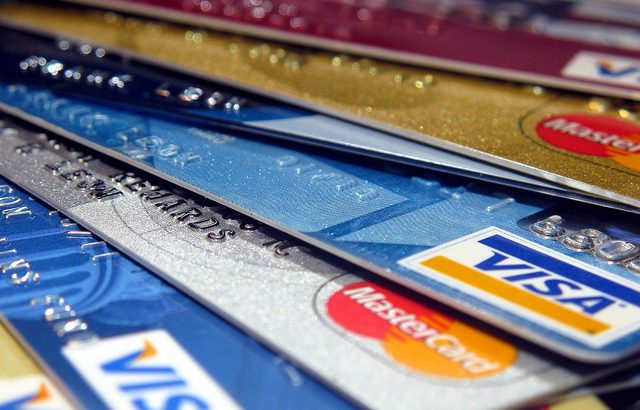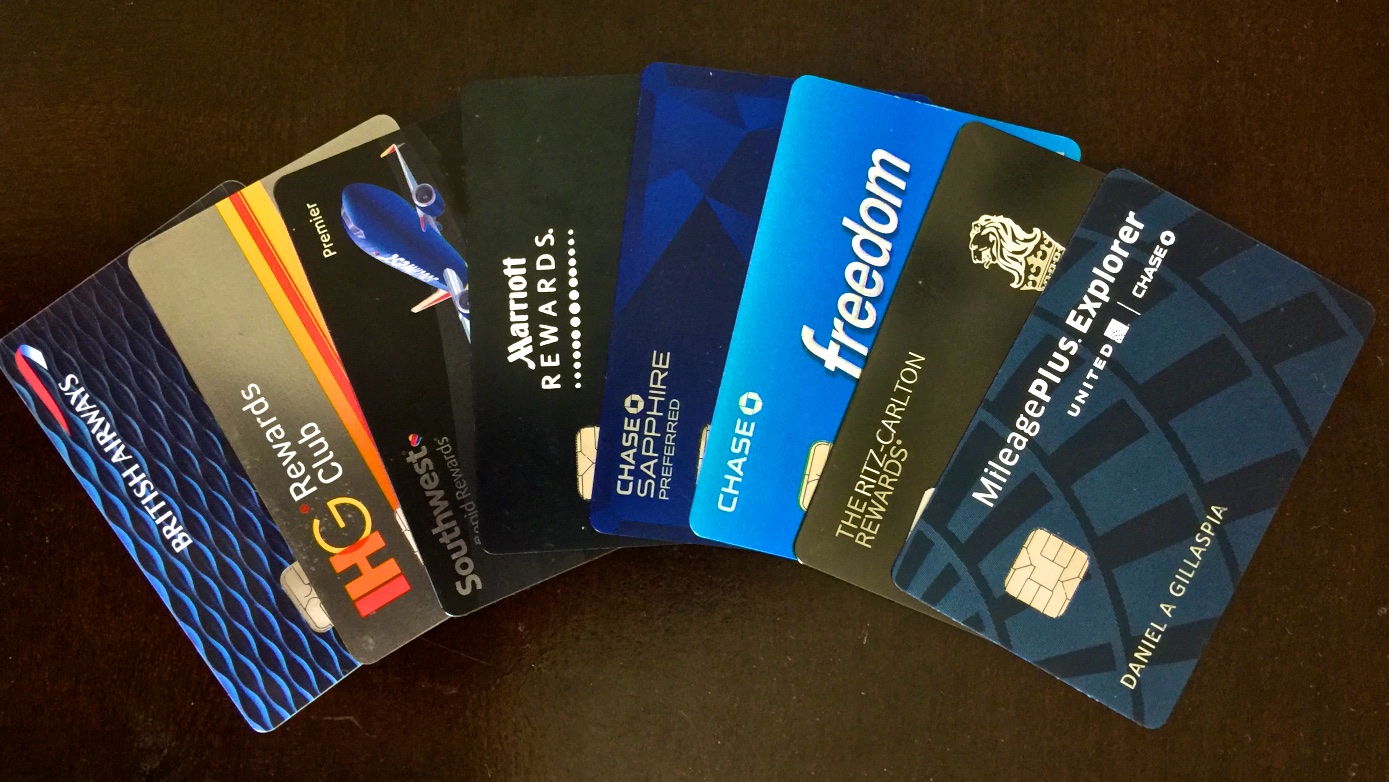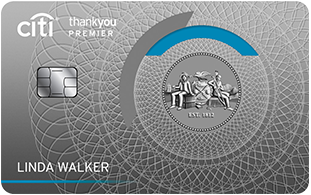Note: This article contains outdated information — will be updated.
Jumping into the game and choosing your first travel credit card can be a bit of an overwhelming experience, especially if the world of credit cards is new to you and you’re eventually planning on applying for several cards. With certain banks now clamping down on applications, the need to make wise decisions when structuring your credit card applications is all the more necessary. This article will look into a good strategy for applying for multiple credit cards.
A word on pace
Some people recommend applying for a handful of cards at once (“app-o-rama”) and others recommend applying for just one or two cards every month. I suggest you taking the more methodical approach and apply for one to two credit cards per month.
Specifically, as you will see below, I suggest when starting out you wait 60 days in between Chase apps but consider applying for two cards at once since they combine hard pulls.
Chase has a 30 day rule where you’ll almost always get denied if you apply for more than two cards within 30 days, so you pretty much have to wait 30 days. And when you factor in the 5/24 Rule (discussed below), it makes sense to just stick to Chase in the beginning and give yourself sufficient time to get approved.
Look into Chase cards and Ultimate Rewards first
Right now Chase has a rule called the “5/24 Rule” which means that you can’t be approved for their house-branded cards (Sapphire Preferred®, Chase Freedom, and Chase Slate) if you have opened 5 or more accounts in the previous 24 months. Also, there are rumors that this rule will be enforced across ALL Chase cards even co-branded cards like the United MileagePlus® Explorer card and their business cards. The jury is still out on when and if this will come into effect, but it’s definitely something to consider when applying for cards.
Thus, you will probably best be served by applying for Chase cards first unless you are certain that you will not be getting value from their co-branded cards or house cards that earn Ultimate Rewards. And you should be 100% certain. For example, if you’re not familiar with airline alliances and have ruled out Ultimate Rewards simply because you didn’t see an airline you’re interested in on their travel partner list, you need to go back and do some more homework. (A lot more homework, I’d say.)
So once you decide to pursue Chase, you need to know which cards to go after first. Below you will see my recommended options for your applications with Chase. The slash (“/”) indicates an option for your first application and the hyphen (“-“) indicates an option for your second application that you should probably do at the same time as the first.
Note: I’ve recommended the option of applying for a house-branded card along with a co-branded card for Chase since some are often denied when they apply for two house cards at the same time (although you definitely can get 2 house cards at once).
My order for pursuing cards would depend on my prior credit history.
Previous history with Chase or good credit?
- Sapphire Preferred/Reserve – Co-branded (subject to 5/24)
- Ink Plus/ Ink Cash/ Freedom/ Freedom Unlimited – Co-branded (subject to 5/24)
- Ink Plus/ Ink Cash/ Freedom/ Freedom Unlimited – Co-branded
No history with Chase or little credit history?
- Freedom/ Freedom Unlimited – maybe Co-branded (subject to 5/24)
- Sapphire Preferred – maybe Co-branded (subject to 5/24)
- Ink Plus / Ink Cash / Freedom /Freedom Unlimited – Co-branded
The Ink cards are business cards so if you’re unsure about them and you’d like some insight into applying for them check here.
No credit history?
You may have a very tough time getting approved from Chase without any credit history. Consider opening up a secured credit card, student credit card, or store credit card for 6 months or longer. Then start back at the beginning assuming you have a respectable credit score (typically something near 700)
Of course, if you already have one or more of these Chase cards you can always jump to the next card.
Citi or any other non-Amex bank
After you hit Chase, I’d move to Citi or a bank like Barclay’s.
The reason is that once you opt-in to offers and you start picking up credit cards, you’re more likely to get credit card offers in the mail. One interesting thing about Amex is they tend to send more targeted offers to those people don’t currently hold American Express cards. Thus, I’d hold off on Amex applications and just try my luck to see what kind of targeted offer I might get from them.
If I had to pick one bank to go for after Chase it would be Citi, though.
It’s a little tricky to pick a Citi card right now because some of the best offers for Citi like the 50,000 Premier have disappeared. That would normally be my first pick but with no bonus currently out, I’d probably go for a co-branded card or the Citi Prestige. Since Citi has the 8/65 Rule, you’ll have to wait 8 days to apply for your second Citi card and then 65 days from the date of your first application, so you can’t apply for two Citi cards at once.
Your choices might look like:
- Citi Premier/Prestige (I’d wait for at least 50K offer on the Premier, however)
- Co-branded card like Platinum Select (if 50K offer)/ Hilton HHonors
Examine your pace
It’s always a good idea to periodically examine the pace at which you’re applying for new credit cards.
So up to this point your applications may have looked something like this:
- 1/01/16 – Sapphire and United Explorer Card
- 3/01/16 – Chase Freedom Unlimited and IHG Card
- 5/05/16 – Citi Premier (50K offer)
- 5/14/16 – Citi AAdvantage Platinum Select
So you’d have six cards within about 5 1/2 months. That’s a somewhat conservative approach compared to some people to be honest, but I think it gives you a safe route with dealing with Chase and Citi, while holding out on American Express to come with some better offers.
Not getting overwhelmed with spend requirements
After getting your second Citi card, you might think you’ll be ready to hit up any of the banks but you always have to remember that you’ll need to to be hitting your minimum spend requirements. Although the spend requirements may differ slightly depending on whether or not you’re applying with targeted offers, they would generally look like this:
- 1/01/16 – Sapphire ($4,000) and United Explorer Card ($1,000)
- 3/01/16 – Chase Freedom Unlimited ($500) and IHG Card ($2,000)
- 5/05/16 – Citi Premier ($3,000)
- 5/14/16 – Citi AAdvantage Platinum Select ($1,000)
That would force you to spend about $11,000 in those 5 1/2 months. That may or not may not be possible or an issue for you so but you always have to remember to be realistic about hitting those spend requirements.
Planning your next application
At this point, assuming hitting the minimum spend requirements would not be an issue for you, you’d have to make the choice if you want to jump into Amex or hold off for a potential targeted offer. To be honest, I don’t think I would hold off for Amex targeted offers more than 6 months — there are plenty of worthwhile American Express offers to take advantage of without getting a targeted offer.
If I were at this point, I might consider applying for two more Chase cards if I really wanted any of them because there’s no telling when the 5/24 Rule would potentially kick in. If I didn’t want to apply for any Chase cards, I’d probably go with Amex but once you’ve hit Chase to avoid the 5/24 Rule hurting you and waited out a little for Amex, there’s no real “bad decision” with respect to choosing a bank to apply with (so long as you’re going for quality cards, of course).
American Express
Amex has pretty lax standards for getting charge cards. You should read up on American Express Application Rules if you’re not familiar with them. Since Amex combines hard pulls, I would apply for two cards. You might go for the following two cards, for example.
- Premier Rewards Gold Card/Amex Everyday Preferred – SPG
You could apply for three or more cards but you’d be increasing your odds of a financial review which is never a good thing (although it’s not the end of the world by any means).
Examine your pace once again
So now your applications may have looked something like this:
- 1/01/16 – Sapphire and United Explorer Card
- 3/01/16 – Chase Freedom Unlimited and IHG Card
- 5/05/16 – Citi Premier (50K offer)
- 5/14/16 – Citi AAdvantage Platinum Select
- 6/14/16 – Premier Rewards Gold Card / Amex SPG
Of course, your spending requirements would now be higher so you’d have to keep tabs on them. In this case, the two Amex cards could add on anywhere from $2,000 to $4,000 to the $11,000 you would’ve already met.
You’d now be at 8 cards in 6.5 months which is pretty reasonable (although it might shock 99% of the population to hear anyone describe that as “reasonable”). But you’re not “anyone,” remember?
Future plans and rotating banks
From that point you can stick with a steady 1 to 2 cards per month and be just fine. So long as you’re paying off your balances (or at least keeping them down) your credit score should be going up over time and you’ll be able to cruise along picking up cards you want here and there.
One last thing, I think it’s always a good idea to rotate the banks over a series of months. For example, once you’ve hit Chase, Citi, and then Amex, maybe then you hit up Barclays or Bank of America and then start the cycle all over again with Chase. Banks get a little weary when they see you’ve been pursuing a lot of credit recently, but they get even more weary when all that recent credit has come their own bank.
You’ll be surprised how sustainable this 1 to 2 cards per month application strategy actually is over the course of a year and then even beyond. And one great plus about this strategy is that it leaves open the possibility of jumping on special unexpected offers when they come around. If you’re hitting 4 or 5 cards at once and then a great offers appears, you may be denied from that offer due to the high number of very recent inquiries.
Final word
This strategy is just my personal recommendation. You can still be successful with your applications by varying from this and going the app-o-rama route, but I am just telling you what has worked for myself and many others around me. A steady pace can definitely win the race when it comes to credit card applications.
Cover Photo by frankieleon via Flickr.
Daniel Gillaspia is the Founder of UponArriving.com and the credit card app, WalletFlo. He is a former attorney turned travel expert covering destinations along with TSA, airline, and hotel policies. Since 2014, his content has been featured in publications such as National Geographic, Smithsonian Magazine, and CNBC. Read my bio.




Thanks for this. While we’re not new to the game by any means your post does apply to us in some ways. havn’t applied for any cards in 2 years so is ready for some more chase cards. Planning to start with sapphire reserve and preferred. At that point will have 4 chase cards. One is the oldest card history, other is a freedom. We occasionally use the 5%, but sometimes the freedom feels like it’s costing us a valuable card slot. While I’ve heard time and time again not to cancel in advance it is tempting since I’ve had comments in the past (from reconsideration rep) about the number of cards I have with them.